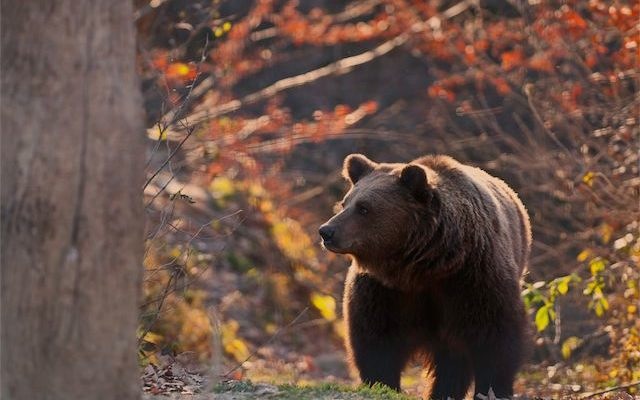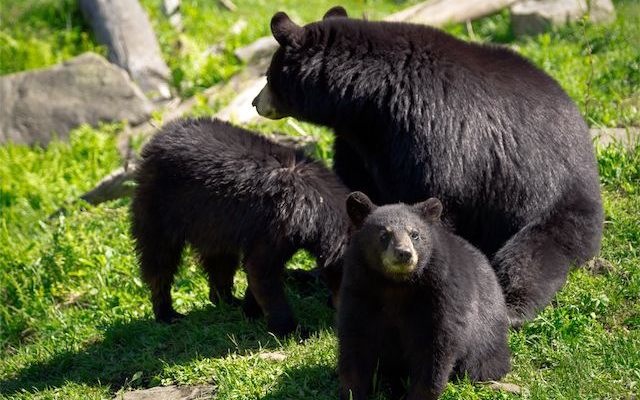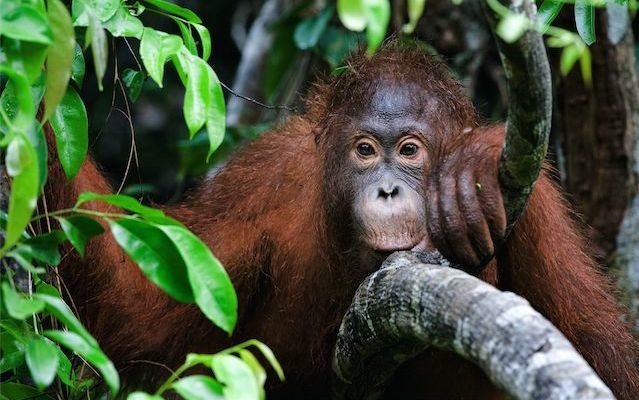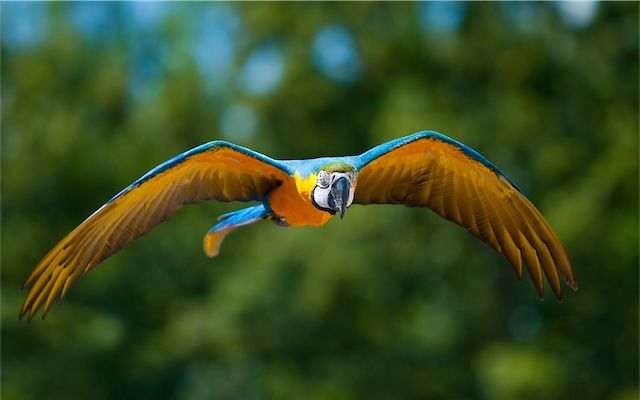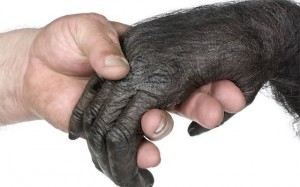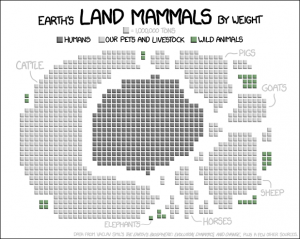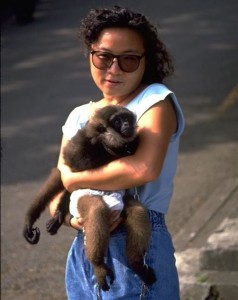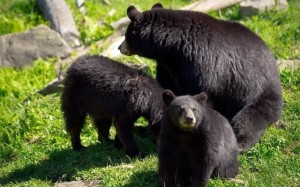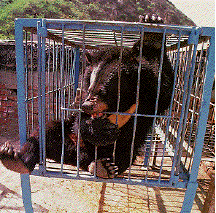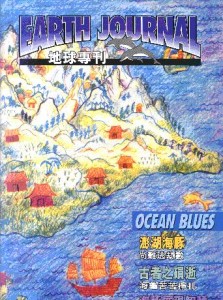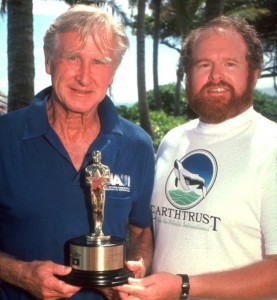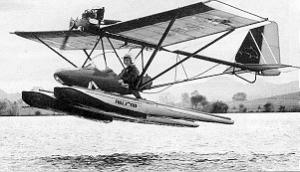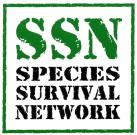Other ET endangered species campaigns
ET and Endangered Species
We are currently living through the earth’s 6th great mass extinction event. There’s no doubting the cause: us. Humans have gotten very good at killing off other species, and have come up with any number of reasons for doing it.
It’s hard to measure – scientists now report, variously, that the extinction rate is now between 100 and 1000 times the historical background rate, and is speeding up.
Of course, a species can be a a lot of trouble before it’s extinct. Indeed. any intelligent person can look at existing trends and extrapolate them forward to see that even some species which are still relatively populous may have no future to look forward to.
We are maintaining many species in a precarious way. Species which exist only in zoos, and have been driven from their natural habitats, are sad vestiges of what they were. They may not be extinct, but they aren’t truly extant species. For instance, there are probably more tigers penned in dark cages being farmed in basements for the supposed medicinal value of their bodies than exist in the wild.
Moreover, many of the fragile treaties which “protect” wildlife from immediate destruction cannot reasonably be expected to keep them in the world. The numbers are discouraging regarding the poaching of elephants, rhinos, primates, virtually all interesting large animals adjacent to significant human populations; and if there is ever even a temporary hiatus in government authority, the wildlife refuges will quickly be overrun by poachers with automatic weapons.
Indeed, the entire current paradigm for species preservation is probably flawed, and ET is working to frame the issues in a new, sober, and more realistic way through its Bottleneck Foundation series of projects. These envision a series of converging “bottleneck” crises and discontinuities which any species must pass through to reach the future.
Endangered Species Triage
We’re not going to save all the earth’s species. We’re pushing them out of the picture.
Species with an evolutionary history as special as our own are being pushed daily into oblivion, never to return.
This odd reality gives our actions a strange gravity. Even normal people can at least try to save something priceless, to somehow help get it into a future in which its journey can continue.
We often find ourselves face to face with such situations, and we do what we can. You can too. No, it won’t be enough, but then again, it has to be.
ET campaigner Susie Chang Highley working on primate rescue & conservation in Taiwan.
Bear Campaign – USA and Asia
Earthtrust, in conjunction with the Humane Society of the United States, has done extensive field work to document the trade in bear parts, particularly bear gall bladders and bear paws, which are parts of the Chinese medicine and the “exotic gourmet” trend in East Asia, respectively. The Highleys again spearheaded this effort, conducting sometimes dangerous undercover work in China. Their sometimes shocking results are documented in their extensive report, titled “Bear Farming and Trade in China and Taiwan”.
When it’s just Not Enough
From 1980-94, ET worked to try saving the Baiji, the Yangtze River Dolphin.
Cute little guys. We, and the rest of the world failed. They’re extinct now.
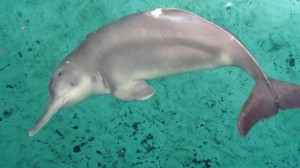 We won’t mention all the failures here, but the reality is that we exist in the middle of the earth’s sixth great mass extinction event. A mass extinction caused solely by humans in our multitudes, with our commerce, with our side effects.
We won’t mention all the failures here, but the reality is that we exist in the middle of the earth’s sixth great mass extinction event. A mass extinction caused solely by humans in our multitudes, with our commerce, with our side effects.
It’s a bit surreal to go from a situation of dealing with real, flesh and blood wildlife to a situation where they’re as gone as the dinosaurs. It will be something often repeated this century, and the list of species lost will grow a lot faster than the list of species guarantee to survive.
ET sent biologists to China to work on saving the Baiji, in conjunction with several top Chinese biologists. There were plans to create a pair of oxbow lake sanctuaries where they might survive. Nobody really thought that they could continue to survive in the rivers of China – there are just too many people doing too many things there; and the nature of a river is that 2-dimensional freedom of movement is required for both dolphins and for human travel and industry.
We had hopes to make it happen. It came down to funding: no funders were interested, so the program petered out on our end for lack of resources to continue it. The (absent) funders may have been right; there was no real prospect for the baiji to return to their ancestral rivers. The most that might have been done was keep them alive in lakes, against the time they could be re-introduced in some hypothetical future where humans don’t do the same things we do now.
It seemed worth doing, but it didn’t get done. That will often be the story… but it needn’t always be the story. We’ll keep trying if you do.
Outreach Efforts can Work
There’s a huge amount to be done. Sometimes, it can be enough to show other people how to help.
ET has conducted award-winning outreach efforts on dozens of issues around the world.
Like a chinese-language “Earth Journal” in Taiwan which organized local businesses and volunteers to save dolphins, primates, tigers & rhinos and many other species.
To the award-winning “WhaleSong” production that explored the intelligence and social abilities of whales.
The Species Survival Network (SSN), founded in 1992, is an international coalition of over 80 non-governmental organizations (NGOs) committed to the promotion, enhancement, and strict enforcement of the Convention on International Trade in Endangered Species of Wild Fauna and Flora (CITES). Through scientific and legal research, education and advocacy, the SSN is working to prevent over-exploitation of animals and plants due to international trade.
The trade in parrots for pets, alligator hide handbags, dried seahorse curios, elephant ivory, and ramin pool cues–just a few examples of the billion dollar international trade in wildlife and plants. Few people realize the scope and impact of this trade that has been responsible for the decline of wild populations of a number of species of animals and plants.
SSN believes that such trade can occur only when evidence positively demonstrates that survival of the species, subspecies or populations and their role in the ecosystems in which they occur will not be detrimentally affected by trade and when trade in live animals minimizes the risk of injury, damage to health or cruel treatment. The species must always receive the benefit of the doubt if available evidence is uncertain.
Criteria for sustainability
The CITES Parties have recognized, in Articles III and IV of the CITES Treaty, that international commercial trade in plants and animals must not be detrimental to the survival of species, or in other words, that it must be sustainable. Too often, use of a species is claimed to be sustainable in the absence of evidence to support this claim. Such evidence should be provided by those who wish to label a use “sustainable”. SSN has developed the following criteria to assist Parties when assessing the sustainability of trade in wild fauna and flora. Proposals to remove or reduce the level of protection afforded, or to start or increase international commercial trade in, a species should meet all of the following criteria:[1]
- Information is collected
- A science-based management system is in place
- The Precautionary Principle is applied
- Government policies, laws and institutions are in place
- People living in the vicinity of the used population are empowered and experience benefits
- Economic sustainability is demonstrated
- Long-term conservation benefits are demonstrated
- The use is compatible with other uses of the species and is not detrimental to other species
- Animals are protected from cruelty and suffering, and incidental mortality is avoided

